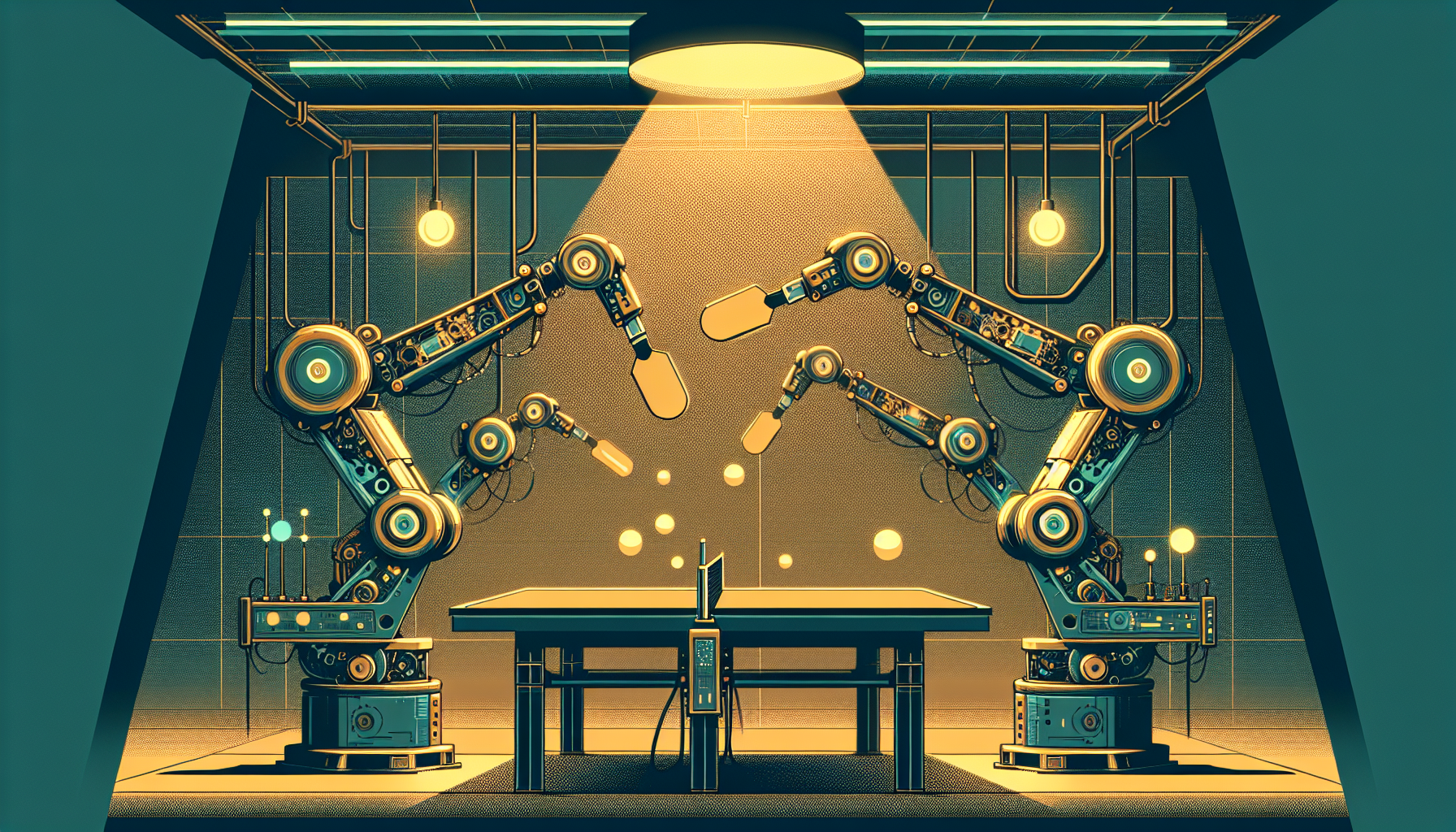Across the world, roboticists and AI researchers have achieved extraordinary progress—ushering in a new era of agile, intelligent machines. Nowhere is this more striking than in the creation of ping pong robots. These systems blend mechanical speed and flexibility with artificial intelligence, demonstrating a harmony between precise movement and smart decision-making unlike anything before.
Engineering Marvel: The MIT Ping Pong Robot
A remarkable breakthrough comes from engineers at MIT, who designed a ping pong robot that showcases both strength and finesse. This machine features a slender robotic arm, securely fastened to the side of a ping pong table. The robot “sees” the game in real time through a ring of high-speed cameras that watch every movement of the ball.
At the heart of the robot lies a sophisticated control system. It rapidly predicts where an oncoming ball will go, calculating its speed and spin with mathematical accuracy. In a split second, the robot selects how to respond. Depending on the shot, it can perform precise actions—looping the ball high, driving it sharply, or even slicing with a tricky chop. Using its mechanical arm, the robot sends the ball to carefully chosen spots on the table, replicating the techniques of skilled human athletes.
When tested under controlled conditions, the MIT ping pong robot could return about 88% of shots out of 150 high-speed rallies. Its fastest serves matched top human speeds, and it performed far better than previous robot designs. The team envisions further advances, including giving the robot an even greater reach. More importantly, their work opens possibilities beyond the world of ping pong—such as creating robots capable of responding swiftly and intelligently in challenging rescue operations, where every moment counts.
The Wisdom of AI: DeepMind’s Approach
Progress is not limited to mechanical engineering. At Google DeepMind, scientists teamed up with researchers at Arizona State University to create an AI-powered ping pong system. Here, the challenge was to infuse a robotic arm with intelligence, allowing it to learn, adapt, and strategize much like a human player would.
The foundation was data: hundreds of thousands of real ball positions, spins, and speeds, painstakingly recorded and used to train the AI. In realistic computer simulations, the system learned the basics—tracking the ball, judging its path, and making solid returns. But it went further, developing strategies for where and how to place each shot, adapting its tactics through countless virtual rallies.
Once the AI gained enough “experience,” it powered a physical robot with fast, nimble movements. Onboard cameras supplied a constant stream of information, and the system learned day by day, analyzing both successes and missed shots. In real matches against amateur human players, the robot won about half its games—an impressive achievement, given the complexity of the sport. While human champions still held the edge, the AI’s strategic depth gave it strength far above earlier generations of ping pong machines.
Beyond the Table: Implications for Robotics
These innovations in ping pong robotics represent more than just technical skill or sporting prowess. The challenge of table tennis demands that a robot “see” and act within fractions of a second, blending vision, movement, and planning into a seamless whole. This makes ping pong the perfect test ground for pushing the boundaries of both physical engineering and artificial intelligence.
The lessons learned here are far-reaching. Fast, adaptive robots are essential for tasks far more demanding than games: searching through hazardous terrain for survivors, or helping doctors with delicate procedures. The ability to perceive, plan, and move with such speed and precision brings us closer to a future where robots work alongside humans in the most complex and vital environments.
A New Benchmark in Robotics
In uniting lightning-fast mechanics with real-time machine learning, these new ping pong robots set a new standard. They show how technology can begin to mirror the quick thinking and dexterity long thought to be unique to humans. With each rally across the table, they echo a deeper promise—a future where intelligent machines become true partners in tackling life’s most urgent challenges.

Leave a Reply